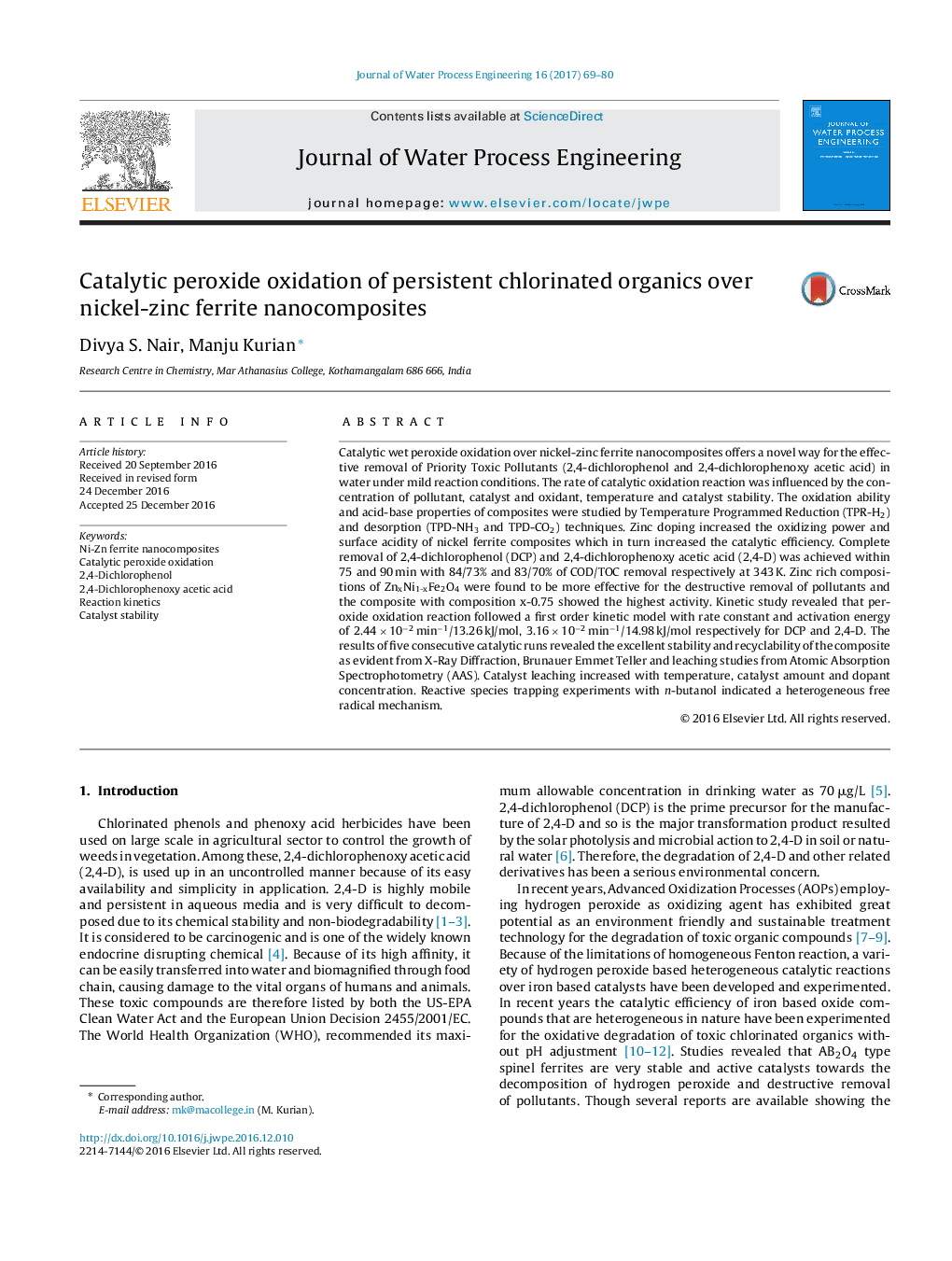| Article ID | Journal | Published Year | Pages | File Type |
|---|---|---|---|---|
| 4910058 | Journal of Water Process Engineering | 2017 | 12 Pages |
Abstract
Catalytic wet peroxide oxidation over nickel-zinc ferrite nanocomposites offers a novel way for the effective removal of Priority Toxic Pollutants (2,4-dichlorophenol and 2,4-dichlorophenoxy acetic acid) in water under mild reaction conditions. The rate of catalytic oxidation reaction was influenced by the concentration of pollutant, catalyst and oxidant, temperature and catalyst stability. The oxidation ability and acid-base properties of composites were studied by Temperature Programmed Reduction (TPR-H2) and desorption (TPD-NH3 and TPD-CO2) techniques. Zinc doping increased the oxidizing power and surface acidity of nickel ferrite composites which in turn increased the catalytic efficiency. Complete removal of 2,4-dichlorophenol (DCP) and 2,4-dichlorophenoxy acetic acid (2,4-D) was achieved within 75 and 90Â min with 84/73% and 83/70% of COD/TOC removal respectively at 343Â K. Zinc rich compositions of ZnxNi1-xFe2O4 were found to be more effective for the destructive removal of pollutants and the composite with composition x-0.75 showed the highest activity. Kinetic study revealed that peroxide oxidation reaction followed a first order kinetic model with rate constant and activation energy of 2.44Â ÃÂ 10â2Â minâ1/13.26Â kJ/mol, 3.16Â ÃÂ 10â2Â minâ1/14.98Â kJ/mol respectively for DCP and 2,4-D. The results of five consecutive catalytic runs revealed the excellent stability and recyclability of the composite as evident from X-Ray Diffraction, Brunauer Emmet Teller and leaching studies from Atomic Absorption Spectrophotometry (AAS). Catalyst leaching increased with temperature, catalyst amount and dopant concentration. Reactive species trapping experiments with n-butanol indicated a heterogeneous free radical mechanism.
Related Topics
Physical Sciences and Engineering
Chemical Engineering
Chemical Engineering (General)
Authors
Divya S. Nair, Manju Kurian,
